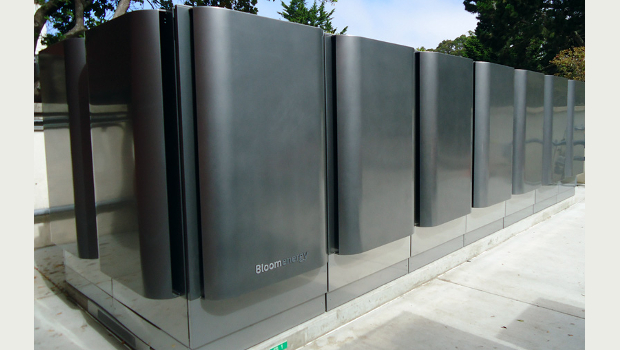Data centre provider Equinix is making a major bet on fuel cells to power its facilities by installing natural gas-powered fuel cells at 12 of its US data centres. It is part of a push for the firm to be 100% reliant on renewable fuels, and it could set an example for other data centres in power management.
Equinix uses fuel cells developed by Bloom Energy, a leader in the data centre energy market that has been profiled by 60 Minutes and whose giant “batteries” are installed at data centres run by eBay, Apple, NTT, CenturyLink and Verizon.
Lower emissions
Bloom’s fuel cells produce significantly fewer carbon emissions than traditional gas-fuelled power plants, and natural gas is cleaner burning. Also, the Bloom cells do not require water, unlike traditional power plants, which need large amounts of water to generate energy and keep cool.
The technology produces the energy on-site rather than piping it in over the electrical grid. eBay, for example, uses Bloom fuel cells to power its Utah data centre and uses the electrical grid for back-up. In the old scenario, eBay would use the grid for the primary source and diesel generators for back-up.
All told, the 12 Equinix data centres powered by the Bloom cells will generate about 37 megawatts, making it the largest single deployment of fuel cells for data centres to date. Equinix is the world’s largest colocation and interconnection company and has a long-term goal of powering its data centres with 100% renewable energy. So far, it is at 56%, according to its most recent sustainability report.
Fuel cells for data centres
What is good for Equinix will undoubtedly be good for the rest of the data centre market, including private data centres. Data centres are a massive power drain nationally. According to a government study, US data centres consumed about 70 billion kilowatt-hours of electricity in 2014, the most recent year examined, which accounts for 2% of the country’s total energy consumption.
The biggest obstacle to fuel cell adoption is they are very expensive. There is a large up-front cost and savings are only realised over time, which can be a deterrent for smaller, less capitalised firms. Bloom has had a leasing programme since 2013 for its energy cells, allowing customers to pay for the product over time. The leasing is financed by Bank of America.
With the US suffering from an old electrical grid at capacity and the increasing desire to go green, any steps that can be taken will be welcomed. And the Bloom energy cells are not limited to just the data centre. They can power an entire company’s facility, not just the server room.
As Equinix leads the way and goes along the learning curve, this could be a new way for companies to power their facilities, all of their facilities, not just the data centre.
IDG News Service








Subscribers 0
Fans 0
Followers 0
Followers